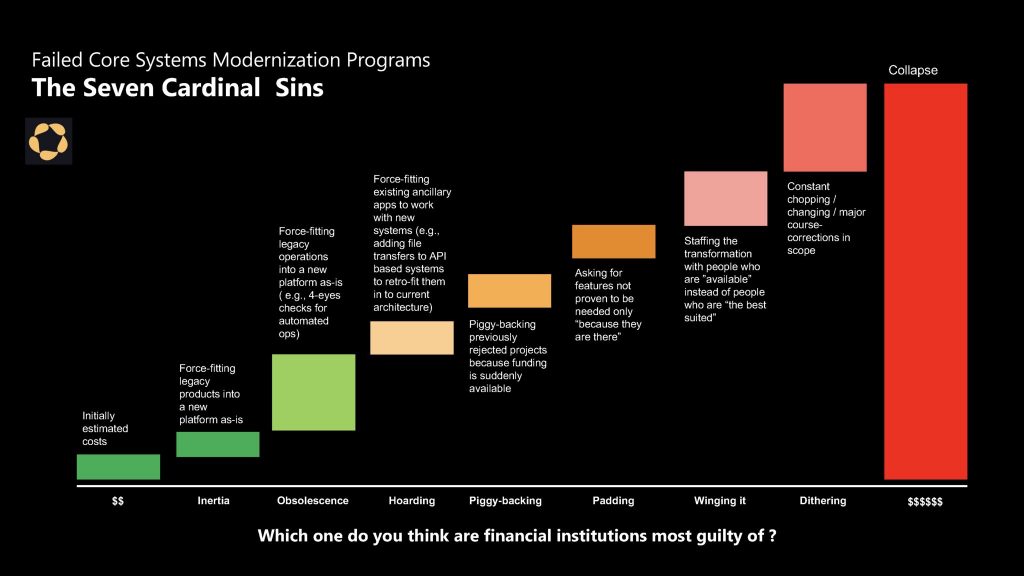It is common knowledge that many core banking platform transformations fail or go significantly over budget. At Pismo, we decided to take a tongue-in-cheek look at the root causes of this unfortunate situation and came up with the “Seven Cardinal Sins” of unsuccessful transformations. Each sin increases the cost of the project, making it collapse in the worst cases.
- Inertia – Force-fitting legacy products into a new platform as-is.
- Obsolescence – Force-fitting legacy operations into a new platform as-is (e.g., 4-eyes checks for automated ops).
- Hoarding – Force-fitting existing ancillary apps to work with new systems (e.g., adding file transfers to API-based systems to retrofit them into current architecture).
- Piggy-backing – Bringing back previously rejected projects because funding is suddenly available.
- Padding – Asking for features not proven to be needed only “because they are there.”
- Winging it – Staffing the transformation with people who are “available” instead of people who are “the best suited.”
- Dithering – Constant chopping, changing, and doing major course corrections in scope.
Which one do you think are financial institutions most guilty of?











